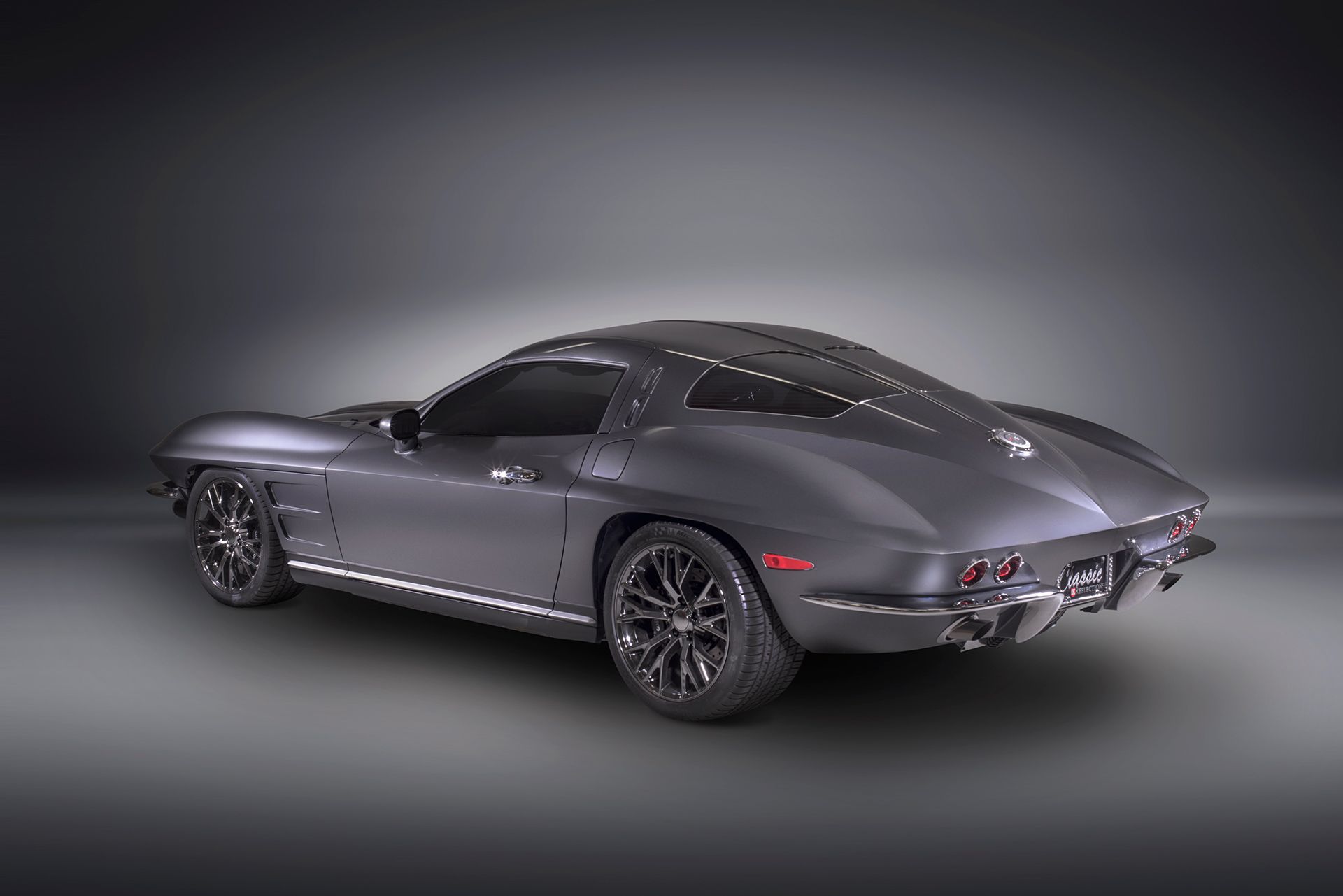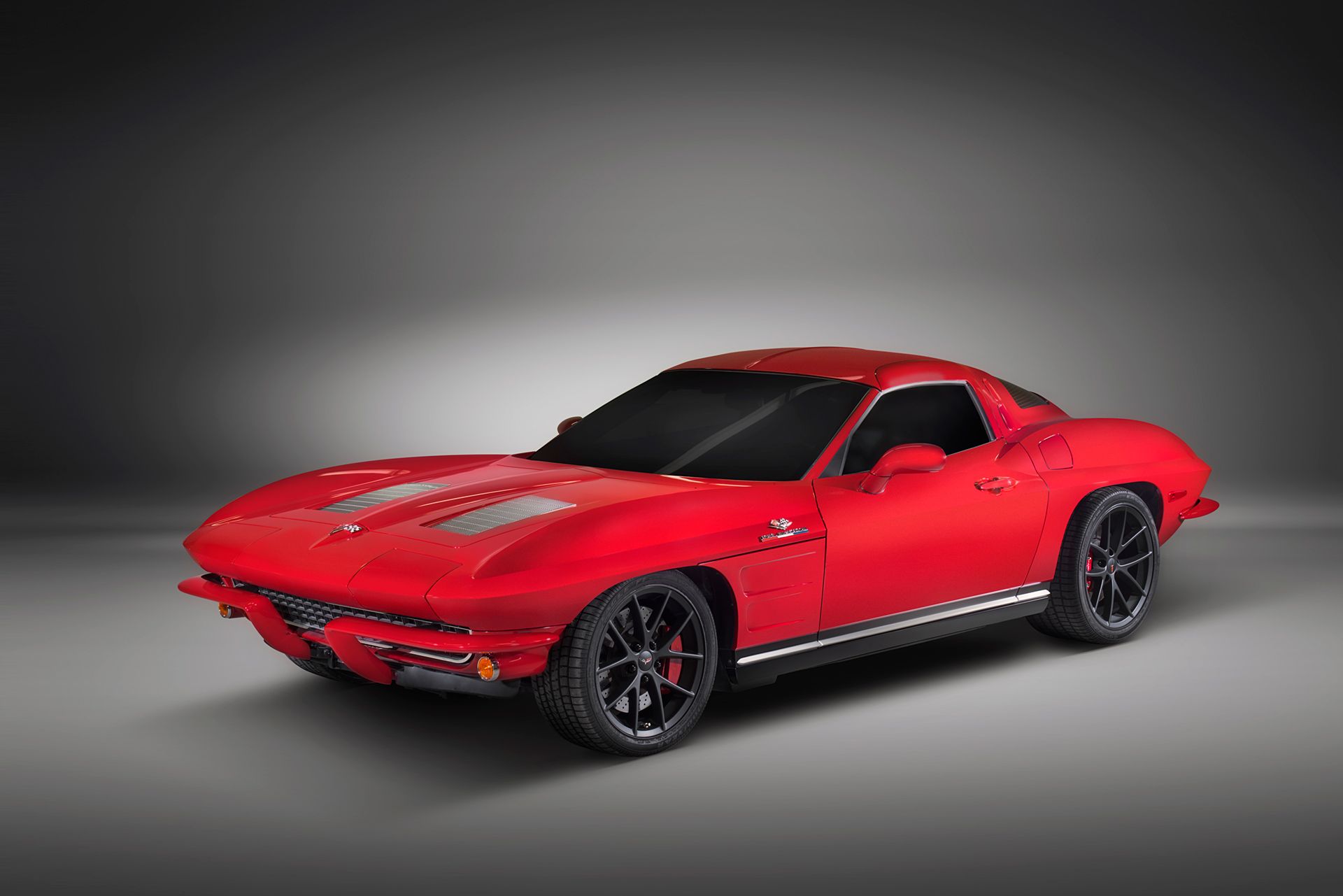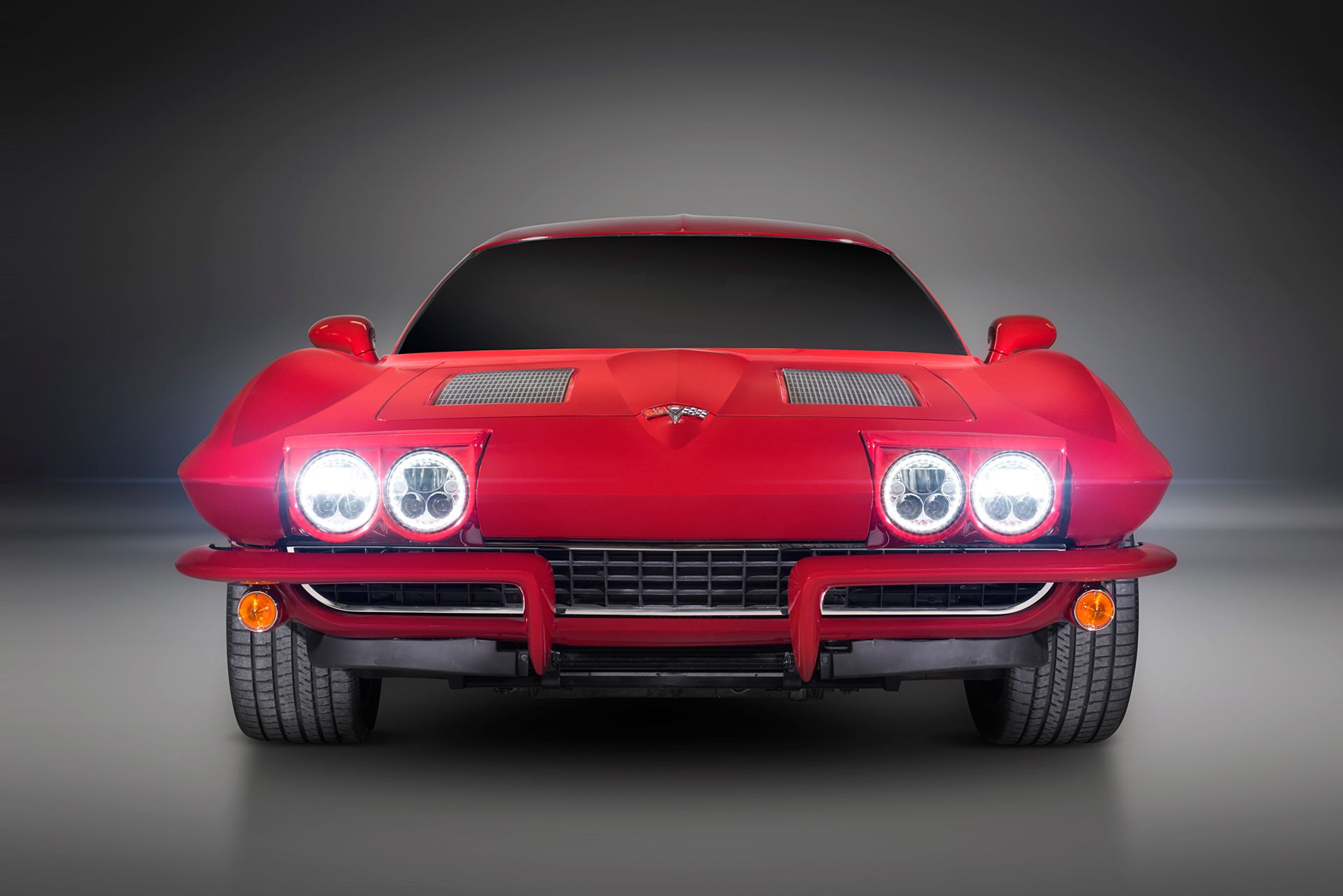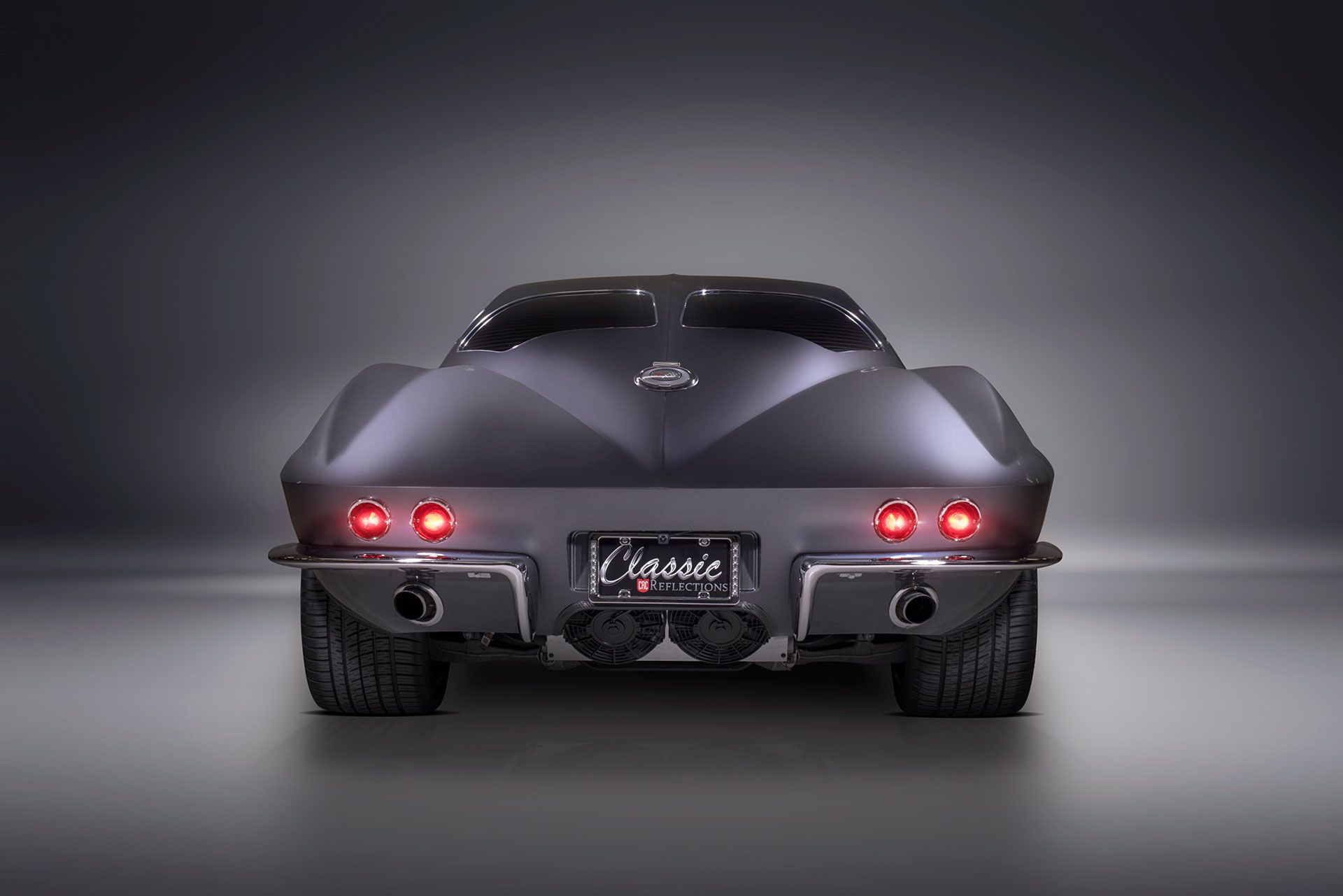There is no shortage of Corvette recreations and even the C8 is being subjected to transformations, but you have to appreciate those examples with a high level of execution. Classic Corvettes, especially those from the 1950s and 1960s, have a special place in the hearts of enthusiasts. While their performance was impressive for the time, it was limited by the technology of their time.
For those who think modern ‘Vettes are a bit too plastic, there are solutions. One of them comes from Classic Reflection Coachworks, which does wonders on the more contemporary versions of the American sports car. While all of the coach builder's available models are exquisite in their finish and accuracy, we just had to take a look at CRC’s modern interpretation of the 1963 C2 Corvette split-window and everything that makes it a great homage to the original Stingray.
Modern Underpinnings
By far, the strongest argument why you should opt for a modern recreation of a classic Chevy Corvette instead of the real thing is the performance and drivability. While nothing beats old-school in terms of a pure, analog driving experience, there are undeniable advantages to having actual chassis rigidity and consistent cornering capabilities.
CRC will take a modern, front-engine Corvette like the C6 or C7 generation and give it classic look. Currently, they offer C1 and C2 conversions, in both open-top and hardtop form. Underneath, everything remains as it was on the donor car. In the case of this 1963 split-window recreation, the base car is a 2013 Chevrolet Corvette C6.
This means that a late, second-generation GM Y-Body platform with front and rear independent suspension can be found underneath. Moreover, the platform accommodates a rear-mounted transmission – a feature that was first present on the C5 Corvette. Up front, you still get the 6.2-liter, LS3, pushrod V-8 engine that produces 430 horsepower (321 kilowatts) at 6,500 RPM and 424 pound-feet (575 Nm).
With the optional, vacuum-actuated valve exhaust, those numbers were 436 horsepower (325 kilowatts) and 428 pound-feet (580 Nm). Of course, the engine choice depends entirely on what the donor car is. A C6 Corvette ZR-1 with a supercharged LS9 can easily undergo the same aesthetic treatment as the base model, and the C7 is also eligible for the transformation process.
In this particular case, we are talking about the facelift version of the C6 Corvette. In addition to the LS3 engine, which replaced the LS2, there is also an improved six-speed automatic, setup for quicker shifting. The result is 0 to 60 mph (97 km/h) in 4.0 seconds, which at the time, was as fast as a Corvette could be out of the box.
Since we are talking about a 1963 recreation, back then, the quickest version of the C2 managed the 0 to 60 mph (97 km/h) sprint in 5.5 seconds when equipped with the four-speed manual and 3.70 rear gearing. In the case of the six-speed manual, the Tremec T56 was replaced by a TR6060 unit with the same number of gear ratios.
A Full-Scale, Hot Cars Version Of A ’63 Split-Window Corvette
The main selling point of the CRC ’63 Retro-‘Vette is the looks. What started life as a C6 Chevy Corvette has swapped the factory, fiberglass body for a custom-built, carbon-fiber “suit” that replicates the 1963 Chevrolet Corvette split-window’s looks. The overall proportions had to be changed in order to accommodate the C6 platform. Because of this CRC’s version of the C2 split window is both longer and wider. Some design elements like the door cutouts and front roof section give away that the basis is a more modern version of the Corvette but given modern requirements, it is to be expected.
With that said, the masters at Classic Reflection Coachworks have adapted all classic design elements to serve a purpose. At the front, you still get pop-up headlights like on the original C2. The two-piece, chrome bumper has also been faithfully executed. The front hood is actually a clamshell, but you still get a cutout on it that mimics the original C2 hood. Upon opening the clamshell, you are greeted by a standard C6 engine bay, with the exception of a lot of exposed carbon fiber and a special plaque, indicating that it is a 1963 CRC Corvette.
The side features doors that have been entirely redesigned from below the belt line in order to create a single uninterrupted line spanning the entire length of the car. The side skirts now feature chrome trim and the front fenders feature ala-C2, stacked air extractors. By far, the most modern feature here is the wheels, which come from a C7 Corvette Z06. They measure 19 inches at the front and 20 inches at the rear, and are wrapped in Michelin Pilot Sport tires.
The rear is what will make Corvette enthusiasts most happy, as it is an incredibly faithful reincarnation of the split-window design from 1963. The chrome, two-piece rear bumper, round headlights, and of course, the two-piece rear window can fool someone into thinking it’s an actual, 1963 C2 Corvette. What is normally the fuel-filler cap on a C2 Corvette is meant for a battery tender on the CRC version. You put fuel the same way you do in a C6 Corvette.
Best Of Both Worlds
Conversions like this have only one purpose – to combine classic looks with modern performance. Such procedures do not come cheap. CRC’s conversions start at $87,500 and can go as high as $159,000, not including the donor car. It certainly isn’t a bargain, especially considering the base conversion doesn’t do almost anything to the stock interior. Factor in the price of a used C6 Corvette, which can be anywhere between $20,000 and $80,000, depending on whether you are looking at a base model or a ZR-1.
Clearly, CRC’s work involves a lot of high-end craftsmanship. Even so, the price suggests we won’t be seeing many of them around, which means that if you ever decide to spend nearly $200,000 transforming a C6 or a C7 Corvette into a retro-futuristic image of its former self, you will have something truly exclusive and special. GM already provides a great chassis and because the basis for this Corvette is another Corvette, it’s technically, not a replica.




